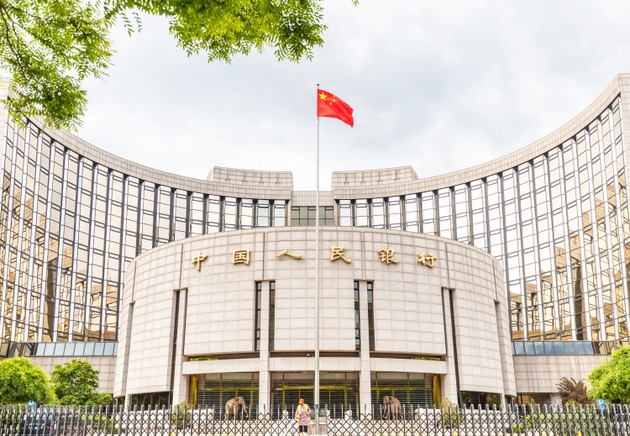Professional investors face a persistent challenge. Macro data describes where the economy has been, not where it’s going. Still, markets move ahead of the macro cycle. Understanding that gap can help investors sharpen allocation timing and interpret weak data in context.
In early 2023, for example, equities rallied even as the ISM Manufacturing Index stayed below 50 and recession calls mounted. That pattern is not an anomaly. Financial conditions often lead, influencing liquidity and sentiment well before the real economy adjusts.
For portfolio managers, the edge lies in spotting those turning points early and separating noise from genuine shifts. The global cycle should be viewed not as a static forecast but as a dynamic system where momentum, breadth, and liquidity interact to create both risk and opportunity.
By focusing on rates of change rather than levels, and on how growth, inflation, and financial conditions intersect, investors can identify inflection points sooner and position portfolios more proactively. What follows is a roadmap for reading market turns before they appear in the data.
The Rear-View Mirror Problem
Gross Domestic Product (GDP), the Consumer Price Index (CPI), and payrolls are lagged and often revised. Markets, in contrast, react to changes in trajectory—not just levels.
Two principles matter:
First order derivative (rate of change): Are growth and inflation accelerating or decelerating?
Second order derivative (change in the rate of change): Is acceleration itself speeding up or slowing down?
When contraction slows (less negative momentum), risk premia can compress, curves can reprice, and equity multiples can stabilize before the data “look good.”
Portfolio implication: Investors who wait for textbook confirmation tend to enter after risk has already been repriced.
Early Signals Matter, Interaction Matters More
Early indicators such as Purchasing Managers’ Index (PMI) data, new orders, export growth, or housing activity are useful, but each is partial. The signal improves when multiple strands turn together such as growth momentum, inflation momentum, and financial conditions. Investors should look at intersecting data points, not single prints. Inflection points tend to occur when several disparate series of data start to pivot in the same direction within a short window. A lone improvement rarely carries the cycle; a synchronized turn often does.
Track a small basket of timely indicators for each pillar:
Growth: PMI data (manufacturing & services), new orders/inventories, freight/exports.
Inflation: trimmed mean or median inflation, breakevens, input cost surveys.
Financial conditions: real yields, broad USD, credit spreads, volatility gauges.
Portfolio implication: When two pillars flip (e.g., financial conditions ease and growth momentum stabilizes), the burden of proof shifts, even if headline data still looks weak.
Financial Conditions: The Underestimated Driver
Many market inflections originate in financial conditions, not in the real economy. Falling real rates, a softer US dollar, tighter credit spreads, and lower volatility operate like a stealth easing—even without a policy pivot. Easier conditions improve funding, reduce required returns, and invite risk-taking.
This mechanism helps explain why asset prices can rise while the data are still deteriorating on the surface. The liquidity window opens first; the macro data follows with a lag. Missing that window means paying a higher entry price later.
Portfolio implication: When your financial-conditions dashboard shows a persistent easing impulse, reassess defensiveness. Rotations that often follow include:
From duration to beta (or from quality/defensive to cyclical/early-cycle exposures).
From US dollar strength to selective emerging market currencies or cyclically sensitive currencies.
From long volatility/hedges back toward carry and spread risk—prudently sized.
The Global Cycle is the Primary Tempo
Country-level growth is important, but markets respond most to the global business cycle. When the largest economies enter a synchronized acceleration (or deceleration), the macro “tide” shifts prices, curves, and cross-border flows. For better decision-making, reframe the question from “Is growth high or low?” to “What’s the probability that the global cycle will turn in the next three to six months?” That probability can be proxied by:
The proportion of major economies showing improvement in leading indicators.
The breadth of upturns in PMI new orders.
Turning points in global trade proxies and semiconductor or industrial activity.
The direction and scope of easing in financial conditions.
Portfolio implication: Breadth is the tell. A rising share of large economies entering acceleration usually precedes a durable risk rotation; narrowing breadth warns of broad de-risking.
Reflexivity: Prices, Narratives, and Liquidity Feed Each Other
Markets are reflexive, not purely deductive. Price changes alter narratives; narratives influence flows; flows affect liquidity, looping back into prices. A drop in real yields can lift valuations, compress volatility, attract capital, and further ease conditions. The loop then amplifies the initial impulse.
Reflexivity also explains snap reversals. When positioning is one-sided and liquidity thins, the loop can flip quickly.
Portfolio implication: For allocators, the task is less about predicting a precise level and more about recognizing when the feedback loop is likely to strengthen or exhaust.
Policy and Political Shocks: Context Is Liquidity
Policy shifts and political events are frequently labeled exogenous “risks,” but the market impact depends on their financial-conditions footprint. The same shock can tighten or loosen conditions depending on how it affects real rates, the dollar, credit, and volatility.
Example framing:
If a policy surprise weakens the dollar and lowers real yields, it may ease global conditions even if it trims growth expectations, which is bullish for duration-sensitive and risk assets (with lags).
If a shock boosts real rates and volatility while widening spreads, it tightens conditions. This is bearish for cyclicals and emerging markets, supportive for duration and quality.
Portfolio implication: Shift the question you ask yourself from: “Is this shock good or bad?” to “How does it transmit into financial conditions—and for how long?”
Bottom Line
Markets turn when conditions change, not when forecasts say they should. By emphasizing rates of change, breadth, and the state of financial conditions within a global-cycle frame, portfolio managers can improve timing, reduce whipsaw from backward-looking confirmation, and allocate capital more proactively.
The goal is not clairvoyance. It is to recognize, early and probabilistically, when the future is starting to arrive in prices.



























